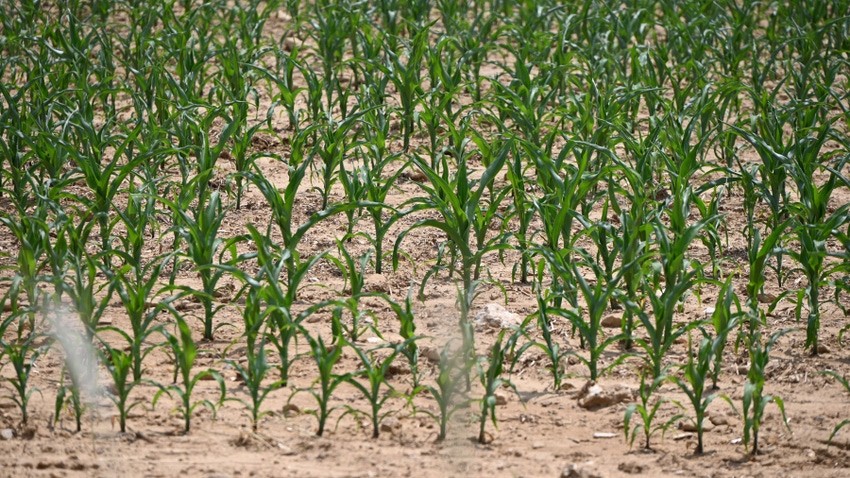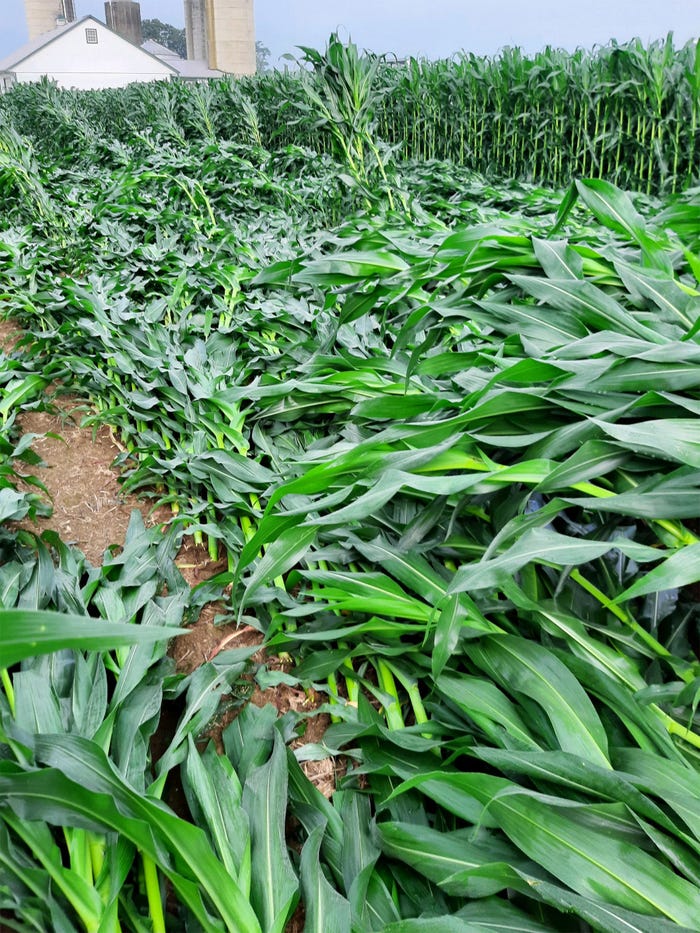
To say it was a roller-coaster weather year is probably an understatement.
Late April and May were so dry that it broke records. Places like Harrisburg, Pa., Wilmington, Del., and Binghamton, N.Y., had their driest Mays ever in 2023.
Then, the heavens opened. June and July saw a lot of rain, enough to save much of the region’s corn and soybeans.
Vermont saw historic flooding July 10-11, where some places saw well over 10 inches of rain in a day or two. Of course, we can’t forget about that Canadian smoke that choked much of the region, too.
Did you struggle planting green?
William Thiele, who co-owns an 80-head, 300-acre dairy in Cabot, Pa., said he had to pull the plug on planting green because it was too dry. He was worried that delaying planting would allow the growing rye to suck up too much moisture from the ground. So, he terminated the rye five days before planting corn and soybeans.
“I don’t know if the crop would have looked better, but that’s exactly what happened to a couple of other fields where we did plant green. Those soybean fields got starved for water,” he recently said.
What happened this year won’t change his outlook for next year. If the weather and soil conditions are ideal, he’ll plant green again. If not, he’ll pull the plug.

VERMONT FLOODING: Most of Cate Farm in Plainfield, Vt., was underwater because of storms that dumped close to a foot of water in the area. One of the farm’s greenhouses was submerged by flooding.
A growing cover crop will transpire and draw water out of the root zone, according to Penn State Extension. This can be great during a wet spring, making planting green attractive. But it can be disastrous in a dry spring.
Here’s some tips on planting green from Extension that you might want to keep handy for next year:
Soybeans are more adaptable to planting green than corn. Get comfortable with soybeans first.
Roll cover crops over 18 inches tall, especially if planting corn.
Use row cleaners to help warm soil in the furrow.
Remember that planters work better for soybeans than drills in planting green because of better seed placement.
Check planting depth. You must account for cover crop thickness.
Put an extra 50 pounds per acre of N at corn planting to compensate for N tie-up by a cereal cover crop. The remainder of N needs applied at sidedress based on yield goals. PSNT (pre-sidedress nitrogen test) and tissue sampling can help you dial in your N needs.
Scout for early-season pests and use Integrated Pest Management.
Minimize neonicotinoid seed treatments and "insurance" insecticide sprays that can kill predators of insect and slug pests, which are allies in pest control.
Dealing with drought
On the U.S. Geological Survey’s website is the seven-day average stream flows. Jessica Spaccio, climatologist with the Northeast Regional Climate Center, says this is something to keep a close eye on as it is a key indicator of immediate drought severity. For example, this past spring’s stream flows were well below normal because of last winter’s record-low snowpack and dry May.
Groundwater status, also on the USGS website, is also useful, but it is more of a lagging indicator, she says.
If you need drought resources, Penn State Extension has a handy resource guide with tips for growers to prepare for extended drought, and possibly filing a claim.
The U.S. Drought Monitor is updated each week, and includes regional updates and outlooks, and some resources for agriculture.
PSU Extension also has articles on controlling escaped weeds in drought-stressed corn, and forage fertility and quality issues during drought.
Mystery of the lodging corn
An issue that came up this summer on a Womelsdorf, Pa., farm highlighted the effects of multiple things going wrong in a field.
Eric Rosenbaum, owner of Rosetree Consulting, a crop consulting business, visited a dairy farm in July and noticed tall corn lodging.
The farm chisel-plowed in early April and planted early as a result. Rosenbaum described the field as the nicest he had seen up to that point. “And since rains returned, it grew from 3 feet to 8 feet in a period of two weeks.”
But as he walked into the field, he saw rows and rows of green stalks that apparently had fallen over. A little digging revealed some clues. The soil was so loose, he described, that you could push a shovel 12 inches down with little effort. The drought prevented proper root growth, he said at the time. But there was another culprit, too: corn rootworm.
“Rootworm damage in rootworm-traited hybrids is not new, but the rootworm pressure was so bad in this field that it prevented the first two sets of brace roots from anchoring the plant to the soil,” he said at the time. “Next year, this farm will look to have another mode of action for rootworm.”

LODGED CORN: Corn lies flat on this farm in Womelsdorf, Pa. A combination of loose soil, poor root growth and corn rootworm feeding likely led to this corn becoming lodged.
Rosenbaum said he dug up roots on 20 farms this summer, all with the same issue of small roots.
I asked him recently if those plants recovered. Here’s what he said:
“The crops stood up enough to cut for silage. Kernel fill was stunted a bit, and there were a bit more leaf diseases — not a disaster though.”
That’s good news. But there are lessons you can take away for next season. Rosenbaum says anything a producer can do to improve soil resiliency, including doing more no-till or planting cover crops, can help prevent lodging.
Rotating away from continuous corn can help, too, especially if you are using the same corn variety year after year.
Speaking of corn, using a hybrid that expresses more than one trait can protect your fields from insect resistance, including from corn rootworm.
Texas A&M AgriLife Extension publishes a handy Bt trait table every year with common varieties and the Bt traits they express. Keep in mind that seed companies label the traits of their hybrids differently. Also, be aware of the percentage of non-Bt corn refuge that must be planted.
If you have lodged corn, here’s some tips to see what the underlying issue is:
First, see if the stalk broke or if the roots are just not holding up.
Examine the roots and assess size of the root mass.
Check for evidence of corn rootworm and root diseases.
In the stalk, pay attention to the color of each node. Any discoloration may indicate stalk disease.
Read more about:
WeatherAbout the Author(s)
You May Also Like






